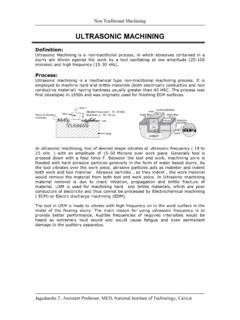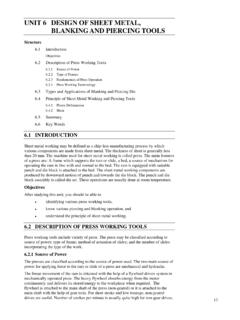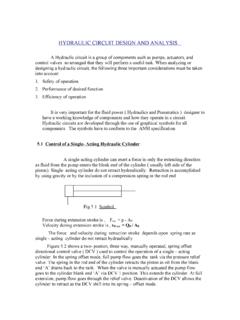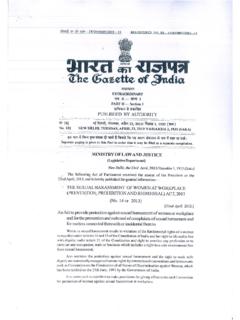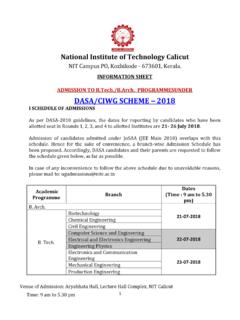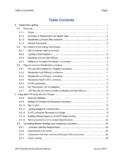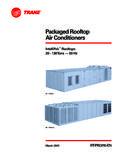Transcription of Preliminary Energy Study Conducted at Arrapetta …
1 Preliminary Energy Study Conducted at Arrapetta Tea Factory By, Dattatraya H Nagaraj M150280EE industrial Power and Automation As part of the course EE6401 Energy Audit and Management, Instructed by Dr Ashok S, NIT Calicut during monsoon semester 2015 CONTENTS Introduction About the company and process Energy consumption profile Data collected Analysis Suggestions Replacement Aluminium of trough fan impeller with PAG fibre fan Replacement of 250W Mercury Vapour Lamps (yard lighting ) by 80W LED lamps Cogeneration Heat Pump For Dryer conclusion INTRODUCTION A Preliminary Energy analysis was Conducted in Arrapetta Tea Factory of M/s Harrisons Malayalam Limited.
2 The aim is to identify and propose/suggest Energy saving opportunities for the Factory. The Study is focused in major Energy consuming areas. There are two major methods of tea manufacture: (i) Orthodox method (ii) CTC (Cut-Tear-Curl) method. Orthodox is a traditional method in which the green leaves are first withered, twisted gradually by the slow rolling process, then fermented and dried. CTC method is a high volume process. In this, the withered leaves suffer more severe cutting to strong liquors, then fermented and dried.
3 Some factories manufacture tea by Dual process - both orthodox and CTC methods. ABOUT THE COMPANY & PROCESS Arrapetta Tea Factory of M/s. Harrisons Malayalam Ltd. Is an ISO 9002 certified company and engaged in the manufacture of tea using Orthodox processing. The factory is having a capacity to process 32000kgs green leaf per day in three shift operation. The raw materials Tea green leaves collected from the field are first spread in withering troughs to remove the internal and external moisture content to certain level to retain the quality of green leaf and its contents to have chemical changes.
4 The leaves are spread in the withering trough at a pre-determined thickness of about 20 to 25 cms. There are 37 withering troughs. In the wither process air is blown from the bottom of the withering beds or troughs for a minimum period of 8 to 15 hours. After withering the moisture content of the leaves is reduced to around 95%. Orthodox: After attaining the required wither, leaf is rolled on roller table in batches of about 300 kgs. Rolling is a process of reducing the size of withered leaf into Curly dhool by the help of Conventional Crank Rollers.
5 At the end of the batch roll, leaf is taken out and sifted (known as ball breaking) to get the required particle size of tea. One batch of withered leaf undergoes three rolling, for about 30 to 50 minutes. The rolled, sifted tea is spread on the floor for fermentation. The tea after fermentation is fed to drier to arrest the fermenting using hot air. From the drier discharge end, black tea is collected and cleaned to remove stalk and fibre. In the sifting room tea is graded, cleaned and stored in bins.
6 The tea stored in bin is packed in packing chests and despatched for auction. Rolling: Process of reducing the size of withered leaf into Curly dhool by the help of conventional crank rollers. Fermenting: The tea after rolling is fermented for some time to have chemical changes with the help of oxygen from atmosphere air. Drying: The fermented tea is dried in dryers to reduce the moisture content to 3% with the help of hot air. Hot water generators are used to build up heat.
7 The fresh air is sucked from atmosphere passes over the hot water and the hot air thus generated is used for drying the tea. Sifting/Cleaning: The dried tea is cleaned in machines like Fibre Extractor (Fibromat), Winnower etc., to remove the fibre as well the lighter or unmarketable tea. The tea is sieved through different meshes to extract size wise. The lighter or unmarketable tea is pulverised and taken for reconditioning. Packing and Despatching: The tea sifted as above is weighted and binned. It is packed in jute bags with HMHDPE liners and is despatched.
8 A detailed process flow chart describing the tea manufacturing process is given below. Fig Process flow Energy CONSUMPTION PROFILE The plant utilizes both electrical and thermal Energy as primary Energy input for the production process. The electrical Energy is being supplied by State Electricity board. The thermal Energy is utilized in tea driers for drying purpose with the help of a hot water generator. Firewood and other fuels like wood waste, veneer waste etc are used in the hot water generator.
9 Diesel is used for self-generation by DG set during supply interruptions and power cuts. The following block diagram shows the process and Energy flow. Fig Process and Energy flow Energy Requirement in Tea Industry Energy is a critical input for tea manufacture. Thermal Energy is required to remove the moisture from the green leaf as well as fermented tea, whereas electrical Energy is required at almost all stages of unit operations. The process of tea manufacturing consists of different Energy intensive unit operations viz.
10 Withering, processing (rolling/CTC cuts), fermentation, drying, sifting and packing. These make use of 3 different forms of Energy electrical, thermal and human. More than 80% of the Energy required is thermal Energy to remove moisture from tea during withering and drying. Every kg of made tea requires kWh of thermal Energy , - kWh of electrical Energy and kWh of manpower. The following pie chart shows the different forms of Energy required in the tea manufacturing in percentage.

